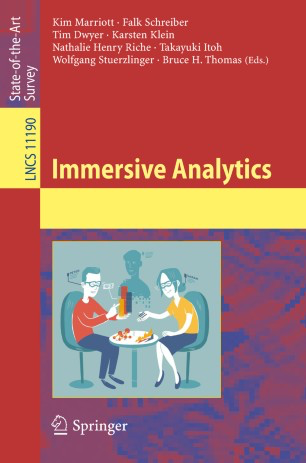
Immersive Analytics: Time to Reconsider the Value of 3D for Information Visualisation Inbook
Kim Marriott, Jian Chen, Marcel Hlawatsch, Takayuki Itoh, Miguel A. Nacenta, Guido Reina, Wolfgang Stuerzlinger
Abstract:
Modern virtual reality display technologies engender spatial immersion by using a variety of depth cues such as perspective and head-tracked binocular presentation to create visually realistic 3D worlds. While 3D visualisations are common in scientific visualisation, they are much less common in information visualisation. In this chapter we explore whether immersive analytic applications should continue to use traditional 2D information visualisations or whether there are situations when 3D may offer benefits. We identify a number of potential applications of 3D depth cues for abstract data visualisation: using depth to show an additional data dimension, such as in 2.5D network layouts, views on non-flat surfaces and egocentric views in which the data is placed around the viewer, and visualising abstract data with a spatial embedding. Another important potential benefit is the ability to arrange multiple views in the 3D space around the user and to attach abstract visualisations to objects in the real world.
